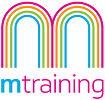What Makes a Good Leader?
WHAT COURSE ARE YOU LOOKING FOR?
-
What Makes a good leader?
15 Feb 2019Leadership Skills - What Makes a Good Leader?
“Leadership is about making others better as a result of your presence and making sure that impact lasts in your absence.”
— SHERYL SANBERG, COO OF FACEBOOK
There are many quotes which explore what leadership is, many of them from leaders in their own right. But how do you define leadership; is it an attitude or a series of behaviours? And how do you go about becoming a good leader?
What is a leader?
To help us tackle these questions it’s important to understand the difference between a manager and a leader. People often think that one is the same as the other. Here are a few key points;
Leaders have followers, while managers have subordinates.
Leaders may also have subordinates in their organisational role as a manager, but when they lead their followers do so voluntarily.
Leaders are charismatic and transformational, whereas managers tend to be more authoritarian and transactional.
This focuses on the idea that managers are given their authority by the company, and subordinates do as they’re told due to a promised reward, i.e. a salary. Followers will do as requested because they believe there will be more transformational effects, such as becoming a better person.
Leaders have a people focus, while managers have a work focus.
Leaders will give credit to others (and take blame on themselves) while fostering bonds which encourage loyalty and shared goals. Managers, instead, focus more on the tasks to be done.
Leaders tend to be more risk-seeking, while managers are risk-averse.
Leaders are more comfortable with risk as a natural obstacle to be overcome, whereas managers tend to avoid conflict and dislike unexpected issues.
There are benefits of having both leaders and managers in the workplace. I’m sure we can all think of examples of leaders who couldn’t manage effectively, and vice versa. Often, having a good manager allows leaders to pursue their vision, safe in the knowledge that operationally things are in good hands. Those managers need leadership skills in their own right too.
So now we understand what a leader is, let’s look at what attributes leaders display.

What makes leaders different?
British Professor John Adair is a theorist and author who has written more than 40 books on leadership. He has identified eight of the top qualities displayed by good leaders;
Enthusiasm, Integrity, Toughness, Fairness, Warmth, Humility, Confidence, Empathy
Everybody displays these traits to some extent in various situations. It’s the ability to consistently display them all, which helps distinguish truly great leaders from everyone else. Have a think about yourself, or somebody you would describe as a leader. How would they measure up against each of these categories?
We’re going to stick with John Adair for a minute. In his book Effective Leadership, Adair talks about what he calls ‘Action-Centred Leadership’. What this leadership model proposes is that for any task, leaders need to balance three specific needs;
Achieving the Task
Balancing and Maintaining the Team
Developing the Individual
Understanding how the needs of the task, team and individual can be balanced and met throughout the course of a task can provide a useful framework, allowing you to achieve your goal while retaining the benefits of effective leadership.
The last two of the above bullets raise an interesting point about teams and individuals, and how to lead effectively - Remember, leaders are often managers in an organisational capacity. How do you get the best out of those who you are leading?
What other practices can make a leader?
Behavioural scientist Paul Hersey and author Ken Blanchard outlined what they called ‘Situational Leadership Theory’ in their 1982 book Management of Organizational Behavior, which tackled exactly this topic.
Hersey and Blanchard stated that there was no ‘best’ method of leadership. Instead, the leader who was best able to adapt their approach would enjoy the most success. This would be determined by the ‘Performance Readiness’ (i.e. ability and willingness) of the individuals or team they were attempting to lead or influence, and the specific needs of the task.
Being able to diagnose the type and level of support an employee needs is key to this. There isn’t room to go deeper into Hersey and Blanchard’s theory here, but it gives us a great starting point to think about how leaders can build strong relationships with those around them, helping to turn them into followers.
There are plenty of other tools and theories which we can use to help identify personality types, which can then help us lead more effectively and get the best from the people we’re leading.

How can I become a better leader?
When we encounter a great leader, it often seems like they have innate gifts which make them rise above the rest. The truth is, the best leaders have spent a lot of time and effort developing their skills.
There are three ways that can help you develop into a better leader;
Learn from your leaders
Speak to those people who consider to be good leaders. Ask them about their journey, and about the tools that they use. Chances are, they will be delighted to help you become a better leader.
Read your way to success
There are numerous great books written by theorists and leaders in the worlds of business, sport and culture. Learning from their them can give you some ideas which you can put into practice yourself. Some reads we would recommend are Start With Why by Simon Sinek, Tribes by Seth Godin and #Girlboss from Nasty Gal founder Sophie Amoruso.
Upskill through training
Learning in a dedicated training setting helps you focus in a way that can be difficult in the workplace or when reading. You can also ask the trainer how the areas covered apply to your specific situation, so you can see the practical applications.
Use all three of these methods for maximum effectiveness. This will create a cycle of improvement and success, and will give you the skills to become a well-rounded and successful leader
For information about our Leadership & Management courses click here





























